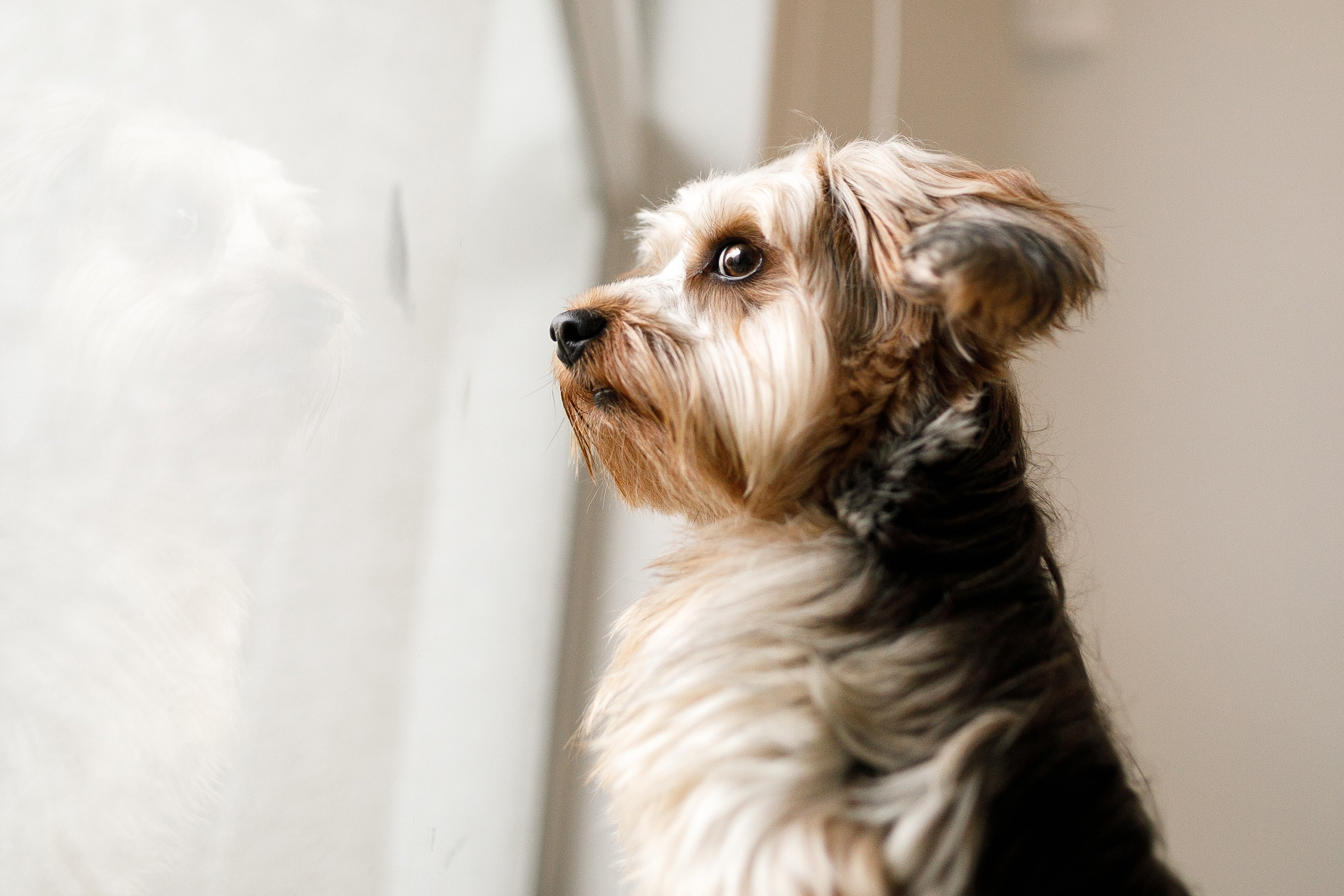It’s the dreaded part of morning for a dog: watching his or her owner scramble out the door and being left alone for a day of silent waiting. But since the spring of 2020, dogs across the globe who used to longingly stare out the window have suddenly found themselves curled up under the desk by their owners’ feet, hearing the chatter of Zoom calls from above. We gave in to their request for that morning walk—and that midday belly rub, too.
Many pet owners say their dogs have thrived with all the extra attention during the pandemic, according to a new study in Applied Animal Behaviour Science. Researchers collected data from nearly 700 dog owners in 32 countries, and many of them reported their dogs were “more frequently seeking close contact and being more playful,” says Tadeusz Jezierski, a professor at the Polish Academy of Sciences and lead author of the new paper.
The result, well over a year into the pandemic, is a new breed of dog that has grown accustomed to 24-hour companionship. And the surge of dog adoption during COVID shutdowns also means there is a wave of new pets that have never been in their home alone all day. So when the world opens up again, how will dogs adjust?
If you gave in to your dog’s every demand during the pandemic, they will continue to ask for the same, says Ellen Lindell, a veterinary behaviorist practicing in New York State and Connecticut. The question now, she says, is what will happen when that changes? “When we take away that close contact, we get problems in dogs prone to separation anxiety,” says Lindell, who is also president of the American College of Veterinary Behaviorists. “The most common personality issue in dogs is frustration—and during the last year dogs didn’t need to feel frustrated. They got attention whenever they wanted.”
As the humans leave home, dogs’ frustration from losing that instant owner feedback can manifest in a variety of unwanted behaviors. They can be mad they did not get that extra walk and start pacing instead. They can be upset they didn’t get that post-Zoom cuddle, so they start barking. They can miss that midday playtime and instead start tearing up the armchair. They might even wander the house or property looking for you and, when they realize you aren’t there, try to escape.
Frustration in dogs who were around before COVID may be aggravated by quarantine whiplash: alone, then together, then alone again. This can sometimes cause previously cured separation anxiety to return. For a pandemic puppy who does not know what loneliness is, the abrupt change can spark the first bouts of anxiety. And whether they were adopted before or after COVID, shelter pets, who are typically traumatized by separation from their former owner, may relive that trauma.
So what’s a dog owner to do? Most fundamentally, Lindell says, owners have to give their dogs a chance to settle themselves down. A dog must experience being alone again—and Lindell says the key is to expose them to it purposefully.
“Say ‘No, thank you’ when the dog says it’s time to eat or play again so they get used to you not giving into every demand,” she advises. If you know the dog is going to be in a certain part of the house when you are not home, start having the dog relax there even when you are home but put yourself in another room. “It tells the dog, ‘I’m around, but you can’t quite access me,’” Lindell says.
Then continue building up the exposure to separation. Set up the house as if you were still around but then walk out. “Leave the TV on, the light on—that way, at first, the only thing changing is you, not their environment,” Lindell says.
Dogs are creatures of habit, and if there is a rigid daily routine, that makes it harder for a dog to handle changes. Lindell says to leave at random times and expose them to being alone for different lengths of time and at different parts of the day. Basically, you are trying to create a dog that can adapt as we owners experience yo-yoing COVID restrictions and evolving safety protocols, especially with the Delta variant widening its reach.
For many of us, our dogs helped us cope with a foreign lifestyle under COVID-19. Jezierski says 65 percent of his study respondents indicated that their dogs reduced tension during the pandemic. As we humans leave our homes again, it is now time to support these loyal friends, whether that means easing them into the new normal or helping them acclimate to the unpredictable.
ABOUT THE AUTHOR(S)
Katie Weeman is a science writer at the Cooperative Institute for Research in Environmental Sciences. For the past year, she’s been working from home with her two dogs Luna and Sasha.
Follow Katie Weeman on Twitter
